
How do you leverage email to sell products and services? Your first step is reading this post. Glad to have you here.
According to this survey from MarketingSherpa, 91% of folks polled want to get promotional emails from companies they buy from. It makes sense, right? If a customer likes one product, it stands to reason they’ll want to learn about other products you offer. Throw in a discount and watch their natural hesitation to buy melt away.
Email marketing is affordable and flexible. It’s less competitive than advertising on social media. In fact, email is almost 40 times more effective at getting customers than Facebook and Twitter combined. That’s because the people on your list are there intentionally.
Email marketing is affordable and flexible. It’s less competitive than advertising on social media. Click To Tweet
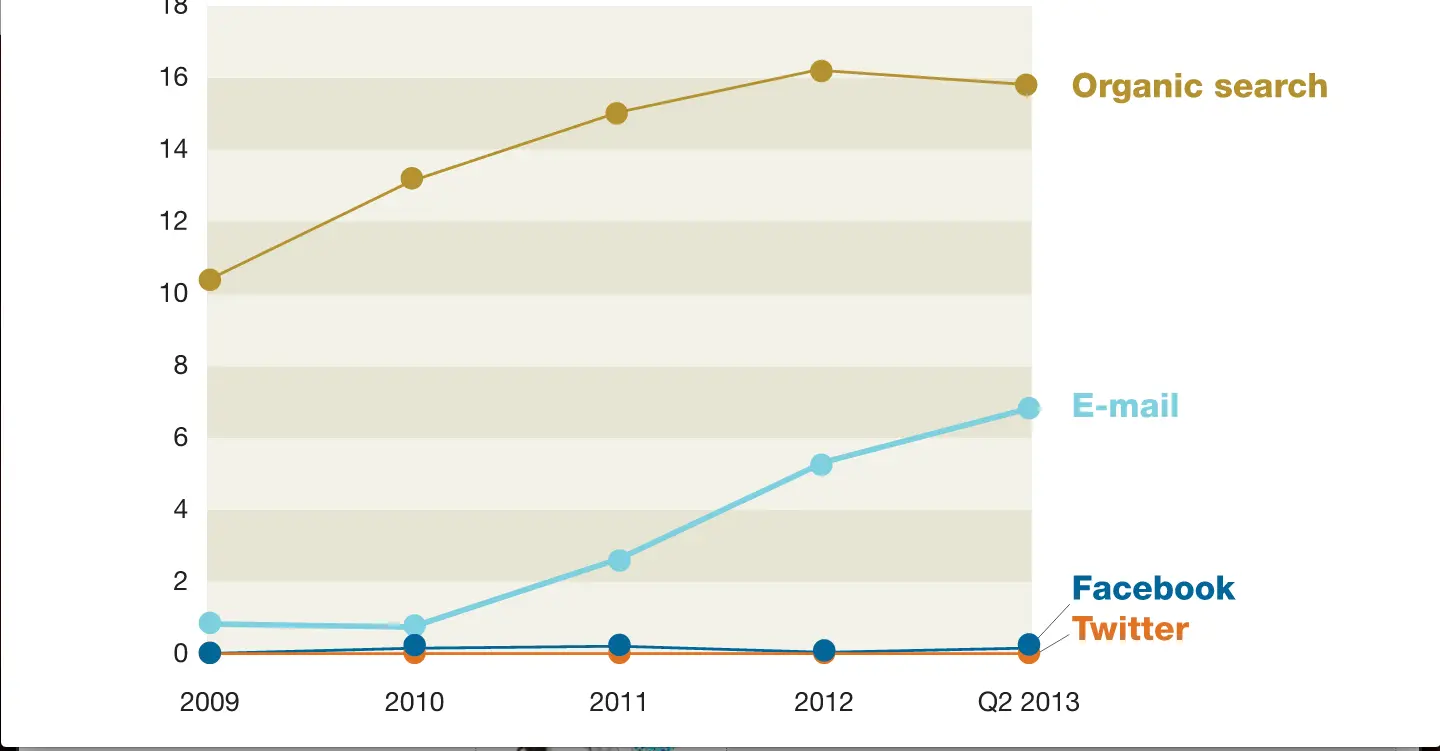
These people opted in at some point. So, you have a relevant, motivated audience ready to hear what you have to say.
But email marketing reaches beyond your newsletter letter list. It can also reach customers who’ve purchased from you but didn’t subscribe to your newsletter. They can be marketed also.
In this post, we’re going to discuss some very wonderful ways to use email to sell your stuff, and sell it like a boss. Let’s get started.
Would you like examples of killer email marketing? Subscribe to receive this free resource.
Focus on Your Subject Line
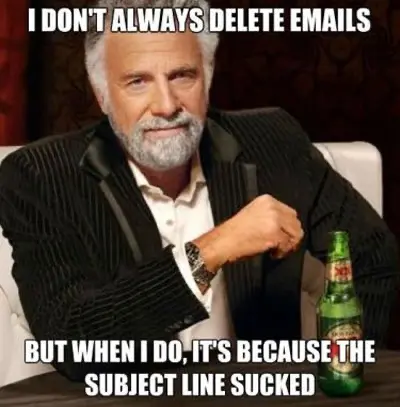
Bring ‘em in with a better subject line.
FREE widget GUARANTEED if you buy right NOW!!!
Yeah, don’t do that. Your subject is perhaps the most important part of your email. It’s how you’ll get folks to click– but nobody wants to click on spam. Words like “free,” “guaranteed,” and “buy now” are certifiable spam. In fact, many email platforms have built-in filters that scan incoming emails and automatically mark suspect emails as spam.
If this happens to you, it could sink your entire email campaign and put you in jeopardy of a lifetime ban.
Even if your email slides past the built-in automatic filters, you have to make it past the ultimate one– the “human” filter. If your subject line looks like spam, scam, or click bait, you’re basically inviting your subscribers to click on the “spam” button in their email inbox.
Let’s talk about what you should do to optimize your subject line and get subscribers to click.
Focus on benefits, not just features. How will the reader benefit from reading your email? Get them to open first – don’t just hawk the product in the subject line:
Learn How To Increase Your Productivity 10X By Tuesday
vs.
Buy Our Productivity Product, Available Now
The first one offers a benefit to the reader, the second one just pushes your product.
Create a sense of urgency around your product. Use the subject line to incite action (i.e. Only X spots remaining– can I count you in?).
Keep it short. Stay around 50 characters or less. It’s easier to read that way.
Jump on Cart Abandonment
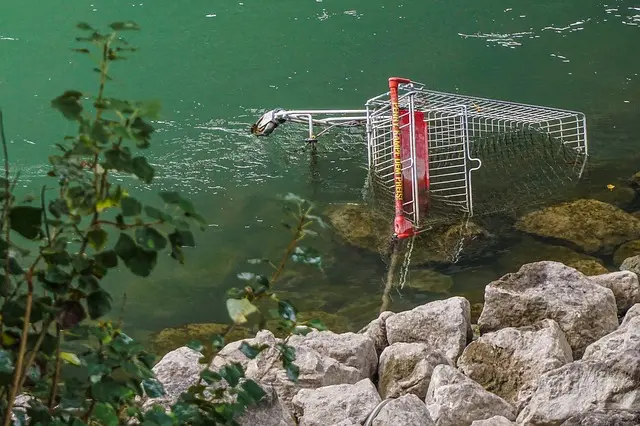
Catch that runaway cart!
Don’t feel bad if prospective buyers leave without making a purchase. For online shopping, the average cart abandonment rate hovers around 69%. That’s seven out of ten shoppers.
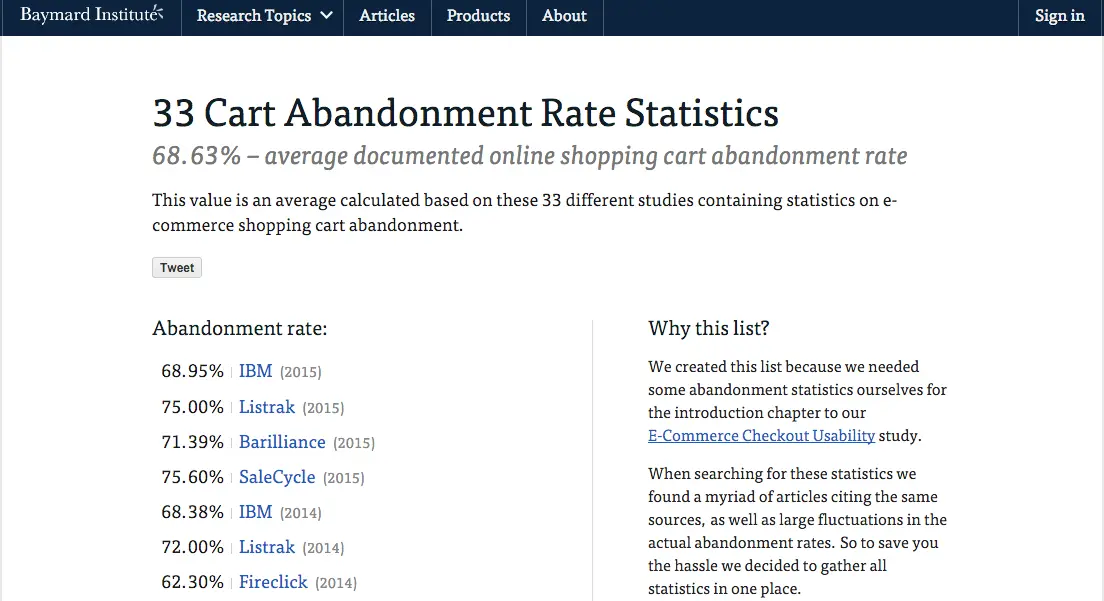
Although it’s the industry norm, it doesn’t mean you can’t do something about it.
Did you know that you can use email to re-engage your buyers and get them to buy? Here’s how:
First, figure out why the customer abandoned the cart to begin with. Here are the top three reasons for cart abandonment:
- Unexpected shipping costs. This may not apply to you, but if you’re selling a product that requires shipping, here is an unavoidable truth: People love free shipping. Some would-be customers are deterred by the cost of shipping. You may want to restructure your pricing to accommodate a free shipping model. (Just a thought.)
- Browsing/ Research. This happens a ton. A prospective customer comes to your site on a recon mission, finding out what you offer at what price.
- Comparison Shopping. The prospective customer already knows what you offer and what your competitor offers, and now they’ve pitted your similar products against each other to see which one wins the Hunger Games. May the odds be ever in your favor.
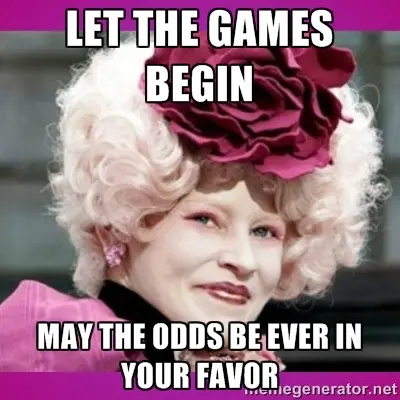
Image Courtesy of MemeGenerator.Net
Now, here are a few ways you can overcome these obstacles with a well-designed email strategy.
Set up your online shop to collect email addresses at the start of the checkout process. This way, when a prospective customer inevitably abandons their cart, you’ve got a lead (an email) and possible path to wooing them back.
Create a re-engagement campaign that automatically launches within minutes of the cart’s abandonment. You don’t have days or even hours to launch your email– you have about 20 minutes before the trail goes cold. Send an email while you’re still at the top of the buyer’s mind.
Offer free shipping to sweeten the deal, if you don’t already. If you do have free shipping or shipping doesn’t apply to your product/service, consider offering a discount code to entice.
Add an image of the product to remind the buyer what they’ve abandoned. Some people abandon a lot of carts in a short amount of time.
Include reviews or endorsements of the abandoned product in your email. This will give your product a favorable perception and the customer a reason to come back and purchase (fingers crossed).
According to this research from Kissmetrics, cart abandonment re-engagement emails can actually win back 12% of abandoned cart customers.
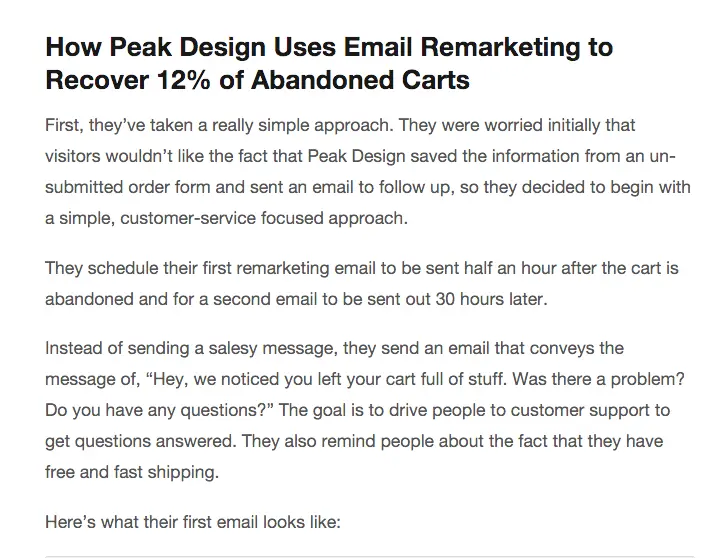
Remember the Date
Keep up with special dates for your customers and newsletter subscribers. A good list to remember:
On these dates (or just prior), send out a special email. Offer a free gift as a goodwill gesture, and follow that up with a discount code for a product or service.
Create a Referral Program
After a customer makes a purchase, thank them and offer a special discount or promo code. Invite them to share with friends via a referral program sign-up. This way, you can keep your customers and turn them into superstar referrals.
Relaunch Older Products
Introducing the new and improved version of your popular product. If you have a product that’s sold well for you in the past, try updating and repackaging that product.
Give your email subscribers first dibs. Send out an email campaign discussing the exciting re-launch of your best selling product. Talk up the new features in a way that highlights the benefits to the customer. Here’s a basic timeline of what you should do and when:
1 Month Before Launch – Send out an email to your subscribers teasing the new product. Explain that you’re still working on it, but they’ll receive an exclusive first look at the product.
2 Weeks Before Launch – In your normal newsletter, discuss how excited you are to work on this product. Don’t make it the main topic of your newsletter, but rather an aside. Tease that subscribers will get in first.
3 Days Before Launch – Send out the first look (be sure to add the word “Exclusive” in the subject of your email). List the features of your product as benefits for your customers. Include a video of the product. Offer an insider discount price as a limited time offer.
1 Day Before Launch – Use urgency to get more last minute sales. Explain that the subscriber only has 12 hours, for example, to buy the product before it’s released to the general public at full price.
Of course, this is just a basic outline. Tweak it to work for your audience.
Highlight Success Stories
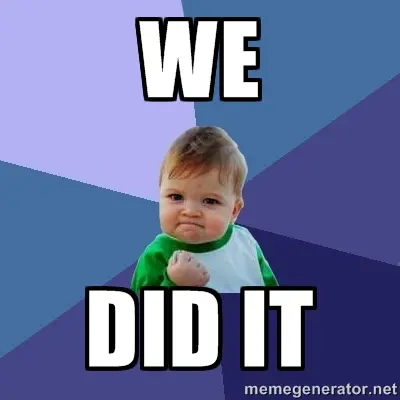
Image Courtesy of MemeGenerator.Net
People love a good success story, especially one they can empathize with. Create targeted emails that showcase a person or company relevant to that email segment. Discuss in your email how this customer used your product and how it benefited them.
Think of it as an email case study.
Do you have multiple audiences? Perhaps you sell socks to men– old, young, and indifferent. But you shouldn’t just send one single success story for them all. What may speak to a younger guy won’t cut it with his granddad.
Instead, segment your list by age (or other demographic). Then, highlight multiple success stories of people who look like the audience you’re sharing it with. That way, the audience can say, “I see myself in this person. I should buy this product.”
Optimize Transactional Emails
Transactional emails are just boring business-as-usual correspondence, right? Wrong. Transactional emails can actually increase your sales. How?
Transactional emails get the highest open rates of any email type. They’re usually opened within minutes, sometimes seconds. Some transactional emails are opened repeatedly.
Now that you know even transaction emails will get read, promise me that you’ll use this opportunity to sell, sell, sell!
Here’s another thing. People who’ve just purchased something from you are more willing to buy related items. This is how you optimize your transactional emails.
Let’s say you’ve just sold them a camping tent. In the “thank you for your order” transactional email that you send automatically, also show related items (clever you) like a camping stove, mosquito spray, and an autographed poster of Yogi Bear.
These are the forgotten products that go well with the item they just purchased. Since they already have their wallet out, it’s not a big leap to purchase a lesser-priced product also.
What’s the Frequency, Kenneth?
Shout out to all the R.E.M. nerds from the 90s. So, how often do you send out your email newsletter? Please don’t say daily, please don’t say daily…
According to this study from Marketing Sherpa, only about 15% of your subscribers want to receive emails from you daily. The sweet spot for most subscribers is once a week. Unless you’ve tested and discovered a different mailing frequency, it’s probably best to stick to once a week.
This way you don’t burn out your subscribers.
Be consistent. You should set your subscribers’ expectations of when and how often they’ll receive an email from you. You can also ask your subscribers how often they’d like to receive emails from you when they sign up.
Final Thoughts
Email is often the best way to reach your customers. Use these strategies to increase your sales. As always, good luck!
Would you like examples of killer email marketing? Subscribe to receive this free resource.